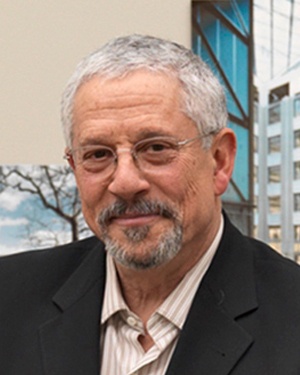Mr. President goes to Washington (Street)

The BSA is 150 years old! How amazing and wonderful is that? Congratulations to us all!
My year as BSA president came at about the midpoint in my 45-year career that began with my membership in the BSA in 1973 and which continues today. My BSA certificate, signed by then-president Chip Harkness FAIA Emeritus, still hangs on my office wall. Faded as it is, it is a document that brings back memories of all sorts.
I was elected to the presidency in 1995 when I had the good fortune to serve as vice president/president-elect during Elizabeth Padjen FAIA’s year as president. The previous year, 1994, was the year of the remarkable BSA Future Search conference on Martha’s Vineyard, which will undoubtedly be covered in by other’s writings for this 150th anniversary celebration. Throughout 1994 and 1995, we continued to struggle with financial problems related to our ownership of 52 Broad Street. These problems had consumed a good deal of our time as BSA board members—and fundraisers!—throughout the early and mid-1990s. It’s hard to believe today, but the problems associated with our 52 Broad Street property actually threatened the continued existence of the BSA. Thanks to the hard work of the BSA’s board and leadership, the financial problems were finally resolved during my tenure as president in 1996. Additionally, it was during my term that we published the report from Future Search that then informed the foundation for the new long-range plan for the BSA that was begun under vice president Roger Goldstein FAIA’s direction. For certain these were turnaround moments for the BSA!

Aside from the usual array of activities that fall to the president of the BSA, I decided early in 1996 to host a citywide charrette on the future of Washington Street. Washington Street Connections: A Public Design Workshop evolved into a public process to study and evaluate the communities along the Washington Street corridor and to stimulate new visions for the area following the removal of the MBTA’s Orange Line. On a chosen Saturday in 1996 (I don’t remember the month), hundreds of Boston residents participated in a daylong series of workshops to discuss the opportunities to improve their neighborhoods along Washington Street, from Downtown Crossing to Jamaica Plain. The day was a huge success that brought the BSA into the public limelight just as it had been before with other similar publicly spirited events. Three follow-up meetings and presentations were scheduled later in the year. The first was a “Town Meeting,” a reception and presentation on the Washington Street Connections event that was hosted by Northeastern University. The second was a panel discussion at the AIA National Urban Design Conference at the Parker House Hotel. The third was a workshop at Build Boston in November 1996.
Aside from the quality of the work we do as an organization to improve the public realm in Boston, the collegiality of the BSA membership is one of its most impressive aspects. My year as president went by in a flash, but it was a remarkably valuable experience for me during which time lasting personal and professional friendships were formed. I hope that I was able to hold up my part of this sometimes daunting task of the presidency and that I perhaps left the BSA slightly better off just as my 129 predecessors had done.
Leland D. Cott FAIA, 1996 BSA president

